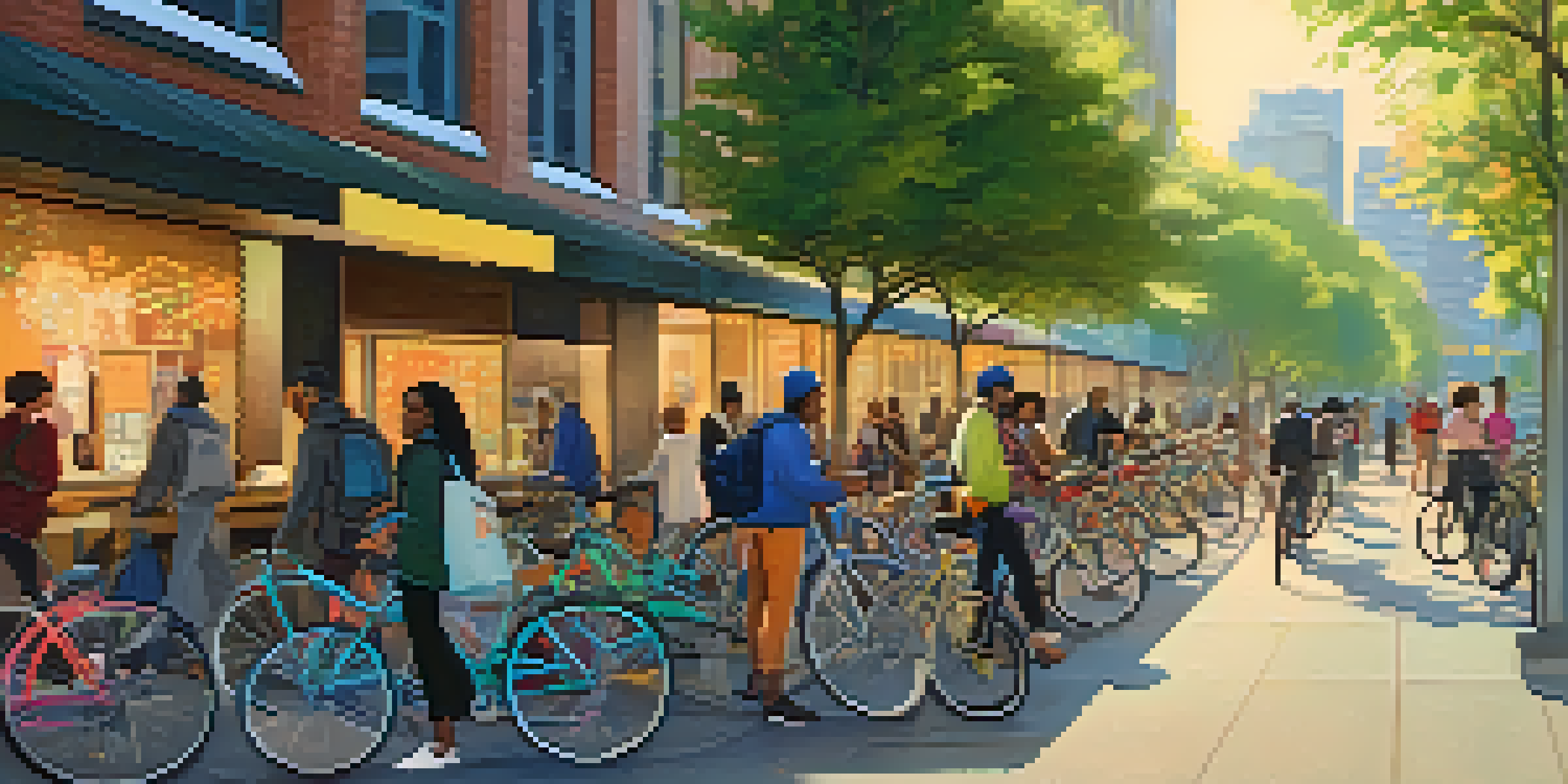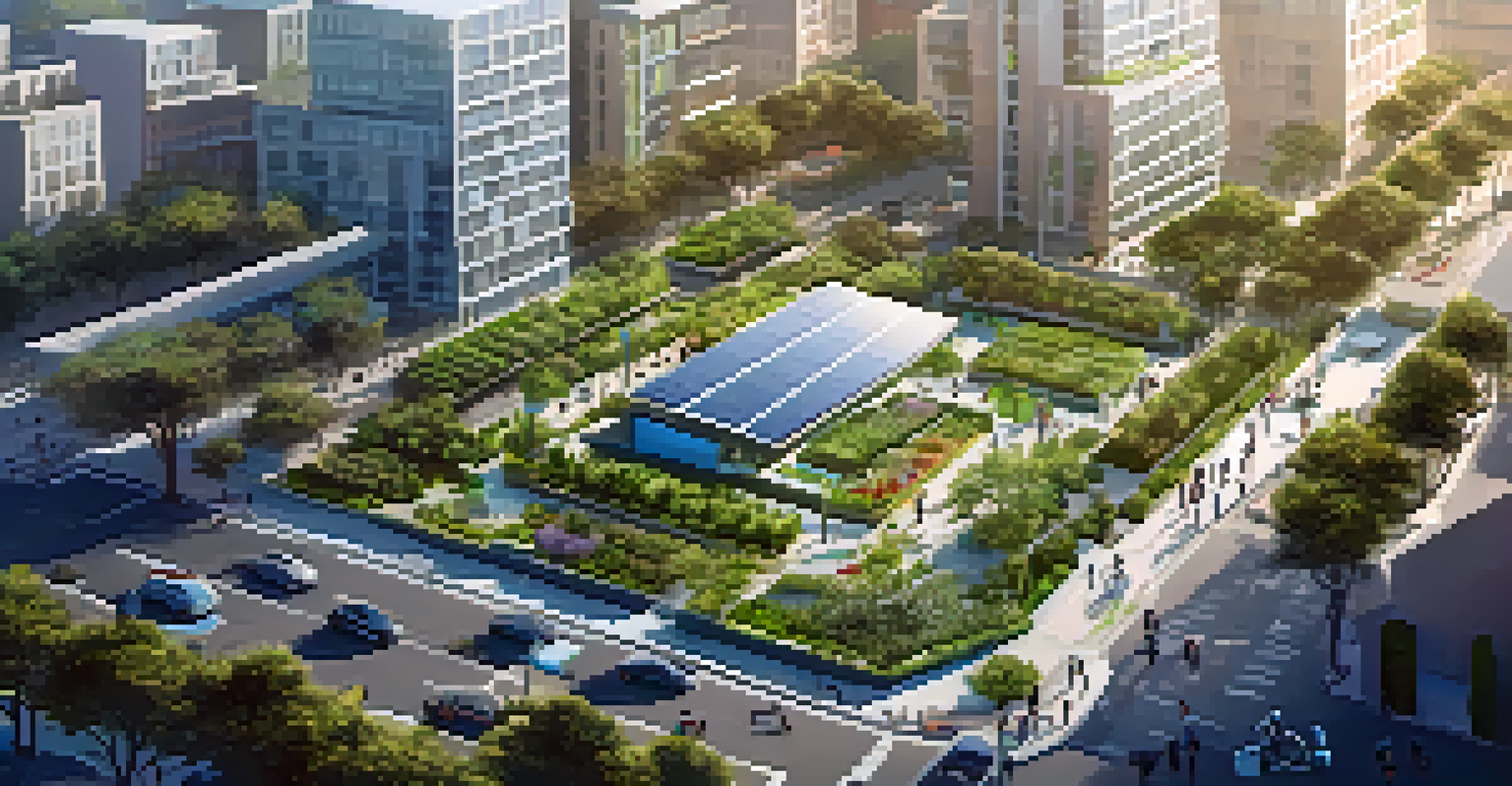Urban Living and the Future of Shared Economy Models

Understanding Urban Living in Today’s Context
Urban living has become synonymous with convenience, diversity, and innovation. As cities grow, they become vibrant hubs where resources are utilized more efficiently. This shift not only impacts daily life but also how communities interact with one another. Understanding this dynamic is crucial to grasping the evolution of shared economy models.
The best way to predict the future is to create it.
In urban settings, people often face challenges like high living costs and limited space. This reality has led to a growing interest in shared resources and collaborative consumption. For instance, co-working spaces and shared housing offer practical solutions to these challenges, promoting a sense of community among city dwellers.
Ultimately, urban living encourages a collective mindset, where the focus is less on ownership and more on access. This shift sets the stage for innovative shared economy models that cater to the needs of modern city residents.
The Concept of the Shared Economy Explained
The shared economy, at its core, revolves around shared access to goods and services, often facilitated through digital platforms. Think of it as a shift from ownership to access, where people can rent, share, or barter what they need. This model has gained momentum thanks to technology, which connects individuals in ways that were previously unimaginable.

For example, platforms like Airbnb and Uber exemplify this concept, allowing people to monetize their underutilized assets. By sharing their homes or vehicles, individuals can generate income while providing affordable options to others. This not only benefits users but also reduces the overall consumption of resources.
Urban Living Embraces Shared Economy
Urban living increasingly focuses on shared resources to overcome challenges like high costs and limited space.
The rise of the shared economy illustrates a cultural shift toward sustainability and community engagement. It's a movement that aligns perfectly with the needs of urban residents looking for cost-effective and flexible solutions.
Benefits of Shared Economy Models in Urban Areas
One of the key benefits of shared economy models in urban areas is cost savings. By sharing resources, individuals can significantly reduce their expenses, which is especially important in cities where living costs are notoriously high. This allows residents to allocate their finances towards experiences rather than ownership.
Collaboration allows us to know more than we are capable of knowing by ourselves.
Additionally, these models promote sustainability by encouraging the efficient use of resources. When people share items like cars or tools, it leads to less waste and a reduced carbon footprint. For example, bike-sharing programs not only provide convenient transportation but also contribute to cleaner air in urban environments.
Moreover, shared economy models foster a sense of community. By collaborating and interacting with neighbors, urban residents can build relationships that enhance their living experiences. This social aspect is often overlooked but is crucial for creating vibrant, connected urban neighborhoods.
Challenges Facing Shared Economy Models
Despite their benefits, shared economy models face several challenges that can hinder their growth. Regulatory issues are among the most significant obstacles, as local governments often struggle to keep up with the rapid evolution of these platforms. This can lead to restrictions that limit the effectiveness of shared services.
Another challenge is trust. For shared economy models to succeed, users must feel secure in their transactions. Incidents of fraud or negative experiences can deter potential users from engaging with platforms. Building a robust reputation system and ensuring transparency is crucial in overcoming this barrier.
Technology Fuels Shared Economy Growth
Technological innovations, such as mobile apps and blockchain, are enhancing the efficiency and trustworthiness of shared economy platforms.
Finally, competition among platforms can also create confusion for users. With numerous options available, individuals may find it overwhelming to choose the right service. Streamlining these choices and promoting user education can help mitigate this challenge.
Technological Innovations Driving Shared Economy Growth
Technology is the backbone of the shared economy, enabling seamless connections between providers and consumers. Mobile apps and websites have transformed how people access and share resources, making it easier than ever to find what they need. This accessibility is particularly appealing to urban residents who thrive on convenience.
Additionally, advancements in data analytics and AI have allowed platforms to personalize user experiences. By understanding preferences and behaviors, these platforms can recommend options that suit individual needs, enhancing user satisfaction. For example, ride-sharing apps can optimize routes based on real-time traffic data.
Moreover, blockchain technology is emerging as a game changer in establishing trust and security in transactions. By providing transparent records, blockchain can help users feel more confident in their interactions. As technology continues to evolve, the potential for shared economy models will only grow.
Future Trends in Urban Shared Economy Models
As we look to the future, urban shared economy models are expected to expand and diversify. We may see more niche platforms emerging that cater to specific needs, such as pet-sharing or community gardens. This specialization can enhance user experience by connecting people with similar interests.
Additionally, the integration of smart city concepts could significantly impact shared economy models. For instance, smart sensors could facilitate real-time sharing of resources, such as parking spaces or electric scooters. This technological integration would streamline access and improve efficiency for urban residents.
Community and Sustainability Thrive
Shared economy models foster community connections and promote sustainability by encouraging resource sharing among urban residents.
Furthermore, as sustainability becomes a more prominent focus, shared economy models will likely prioritize eco-friendly practices. Initiatives that encourage green sharing options, like tool libraries or carpooling, can contribute to a more sustainable urban lifestyle.
Conclusion: Embracing the Shared Economy in Urban Living
In conclusion, the shared economy presents a transformative opportunity for urban living. By embracing these models, city dwellers can enjoy greater affordability, sustainability, and community connection. As urban areas continue to evolve, adapting to shared economy principles could lead to more resilient and vibrant communities.
However, to fully realize the potential of these models, collaboration between users, platforms, and local authorities is essential. By addressing challenges and leveraging technology, we can create a shared economy that benefits everyone. This collective approach will pave the way for innovative solutions that enhance urban living.

Ultimately, the future of urban living lies in our ability to share, collaborate, and innovate. By embracing the shared economy, we can redefine what it means to live in a city, creating a more connected and sustainable future for all.